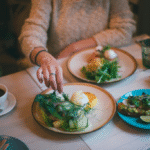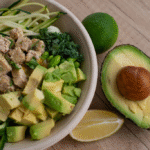Edible flowers are flowers that people can eat safely. They have been part of cooking for centuries in many cultures. In recent years, interest in edible flowers has experienced a resurgence. They are used in salads, teas, baked goods, and as decorations.
However, edible flowers are not just attractive. Many offer essential nutrients that support health. This article explains the nutritional value of popular edible flowers and guides their safe use.
What Are Edible Flowers?
Edible flowers are blossoms that are safe for human consumption. They grow in gardens, fields, or farms and come from various plant species. People eat both fresh and dried flowers. Some flowers taste sweet, while others are spicy or bitter. They can add color, flavour, and nutrition to meals.
Not every flower is edible. Some are toxic or may cause allergic reactions. It is essential to identify each flower correctly before eating it.
Why Eat Edible Flowers?
Eating flowers may sound unusual, but it offers several benefits:
- Natural flavour enhancers
Flowers can replace artificial flavourings. Their natural taste makes dishes more interesting. - Colour and presentation
Flowers add bright colours to food. This makes meals more visually appealing. - Nutritional value
Many flowers provide vitamins, minerals, and plant compounds. These nutrients support the immune system, digestion, and overall health. - Cultural and historical significance
People have used flowers in food for centuries. From Roman feasts to Asian teas, edible flowers have long been part of tradition.
Top 10 Edible Flowers and Their Health Benefits
Below is a list of the most common edible flowers, their flavours, nutrients, and uses.
- Nasturtiums
- Flavour: Peppery and spicy
- Nutrients:
- High in vitamin C
- Contains lutein and other antioxidants
- Supports the immune system
- It may help fight infections.
- High in vitamin C
Nasturtiums are bright, colourful flowers that grow easily in gardens. Both the leaves and flowers are edible. Their peppery taste makes them a good choice for salads and sandwiches. The antioxidants in nasturtiums may help protect cells from damage.
- Calendula (Marigold)
- Flavour: Mildly spicy, sometimes bitter
- Nutrients:
- Contains flavonoids
- May reduce inflammation
- Supports skin repair
- May aid digestion
- Contains flavonoids
Calendula petals are often dried and added to herbal teas. They are sometimes called “poor man’s saffron” because of their yellow colour. Calendula has been used in traditional medicine for centuries for wound healing and stomach issues.
- Hibiscus
- Flavour: Tart and fruity, like cranberry
- Nutrients:
- High in vitamin C
- Contains anthocyanins
It may help lower blood pressure. - Supports heart health
- High in vitamin C
Hibiscus flowers are usually dried and brewed into tea. The tea has a deep red colour and is rich in antioxidants. Studies have shown that hibiscus may help lower blood pressure and cholesterol levels.
- Dandelion
- Flavour: Slightly bitter, earthy
- Nutrients:
- Rich in vitamin A and vitamin K
- Provides fiber
- Supports liver function
- Aids digestion
- Rich in vitamin A and vitamin K
Dandelions are often considered weeds, but they are edible from root to flower. The yellow petals add a bright touch to salads and omelettes. Dandelions aid the body in removing toxins and promoting digestive health.
- Lavender
- Flavour: Sweet and floral with a hint of mint
- Nutrients:
- Contains linalool (a plant compound)
- May reduce stress
- Helps improve sleep quality
- May ease headaches
- Contains linalool (a plant compound)
Lavender is best used in small amounts. It is added to baked goods, teas, and syrups. Many people use lavender to support relaxation. The scent alone can have a calming effect.
- Rose
- Flavour: Sweet, sometimes fruity or spicy
- Nutrients:
- Rich in vitamin C
- Contains antioxidants
- Supports skin health
It may help reduce inflammation.
- Rich in vitamin C
Roses are one of the most well-known edible flowers. The petals can be used fresh or dried. They are added to desserts, drinks, or salads. Rosewater, made from rose petals, is popular in Middle Eastern cooking.
- Chive Blossoms
- Flavour: Mild onion taste
- Nutrients:
- Contains vitamin K
- Offers sulfur compounds
- Supports heart health
- May improve bone strength
- Contains vitamin K
Chive blossoms are purple flowers that grow at the top of chive plants. They can be used like herbs. Sprinkle them over eggs, salads, or soups. They add flavour and visual appeal.
- Borage
Flavourr: Cucumber-like, fresh and cool
- Nutrients:
- Contains gamma-linolenic acid (GLA)
- May reduce inflammation
- Supports hormone health
- May improve skin condition
- Contains gamma-linolenic acid (GLA)
Borage flowers are star-shaped and blue. They are often frozen in ice cubes for drinks. They can also be used fresh in salads or added to yoghurt. The GLA in borage is a type of omega-6 fatty acid.
- Violas and Pansies
- Flavour: Mild, sometimes grassy
- Nutrients:
- Contains antioxidants
- Provides trace minerals
- Supports cell health
- Low in calories
- Contains antioxidants
These flowers are small, colourful, and easy to grow. They are often used as edible decorations on cakes or cupcakes. Their mild flavour makes them suitable for both sweet and savoury dishes.
- Chamomile
- Flavour: Sweet and apple-like
- Nutrients:
- Contains apigenin (a plant compound)
- May improve sleep
- Helps digestion
- May reduce anxiety
- Contains apigenin (a plant compound)
Chamomile is most commonly used in the form of tea. It is popular for promoting relaxation and better sleep. Chamomile may also ease stomach discomfort and bloating.
How to Use Edible Flowers in Meals
Using edible flowers can be simple. Here are some ideas:
- Salads: Add fresh petals to green or grain-based salads.
- Drinks: Freeze flowers in ice cubes or brew them into tea.
- Desserts: Use petals as toppings for cakes, cookies, or yoghurt.
- Main dishes: Mix into rice, pasta, or vegetable dishes for a delicious addition.
- Garnishes: Place on top of dishes before serving for decoration.
How to Prepare Edible Flowers Safely
To enjoy edible flowers, follow these safety steps:
- Identify flowers correctly
Use a trusted guide or expert to confirm the flower is safe to eat. - Avoid flowers from florists or roadside stands.
These may contain pesticides or pollutants. - Wash flowers gently
Rinse in cool water to remove dirt and bugs. - Use small amounts first
. Some people may be sensitive to certain flowers. Try a small amount first to test your reaction. - Store flowers properly
Keep them in the fridge in a sealed container. Use within a few days.
Edible Flowers and Seasonal Eating
Many edible flowers are seasonal. Eating them at the right time ensures freshness and better taste. Here’s a brief guide:
- Spring: Dandelions, pansies, violets
- Summer: Nasturtiums, lavender, borage
- Fall: Calendula, chamomile
- Year-round (if dried): Rose, hibiscus, chamomile
Growing your flowers ensures safety and availability. Even a small pot or balcony garden can produce edible flowers.
Cultural Use of Edible Flowers
Edible flowers are used in many traditional dishes worldwide:
- India: Rose petals in sweets and drinks
- China: Chrysanthemum in teas and soups
- Mexico: Hibiscus (Jamaica) in cold beverages
- France: Lavender in herbal blends and desserts
- Thailand: Butterfly pea flower in rice and drinks
This shows how edible flowers connect food with history, culture, and health.
FAQs
Are all flowers safe to eat?
No, not all flowers are safe to eat. Some flowers are toxic and can cause allergic reactions or stomach upset. Always research a flower before eating it. Use trusted sources or ask a local expert. Avoid flowers from florists, roadside stands, or public parks, as they may contain pesticides or other chemicals.
How do I know if a flower is edible?
To confirm a flower is edible, use a reliable plant guide, book, or university extension website. You can also ask a certified herbalist or botanist. Only eat flowers that are identified and grown without chemicals. Never assume a flower is edible based on its appearance.
Can children and pregnant women eat edible flowers?
Most edible flowers are safe for healthy adults in small amounts. However, some flowers may not be suitable for children or pregnant women. For example, certain flowers may affect hormone levels or digestion. Always consult a healthcare provider before adding new foods to the diet during pregnancy or for young children.
What is the best way to store edible flowers?
Store fresh edible flowers in a clean, airtight container in the refrigerator. Use them within 2–5 days for the best taste and nutrition. You can also dry flowers, such as chamomile or roses, for long-term storage. Keep dried flowers in a cool, dark place in sealed jars.
Can edible flowers cause allergies?
Yes, some people may be allergic to certain edible flowers. Reactions can include itching, rashes, or digestive discomfort. Start with a small amount when trying a flower for the first time. If you have known plant or pollen allergies, consult a doctor before eating edible flowers.
Final Word
Edible flowers bring more than colour and beauty to meals. They offer real health benefits and natural nutrients. Each flower has a unique flavour and purpose. From boosting immunity to calming the mind, edible flowers support many areas of wellness.
To start, try one or two flowers in your next meal. Focus on freshness, proper identification, and safe preparation. Whether in a tea, salad, or dessert, edible flowers can turn ordinary meals into healthy and beautiful experiences.


